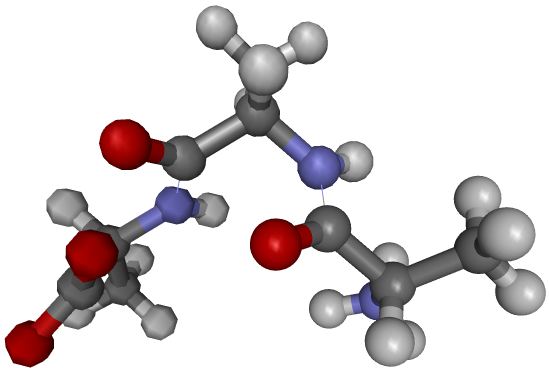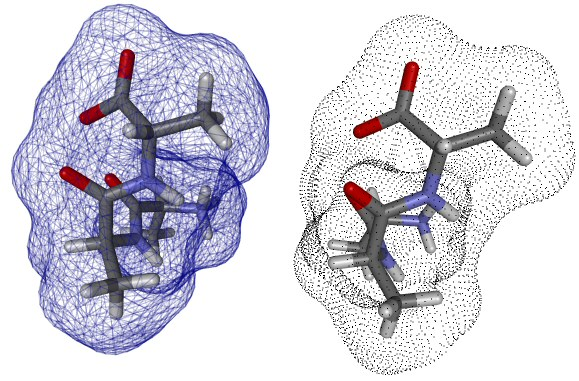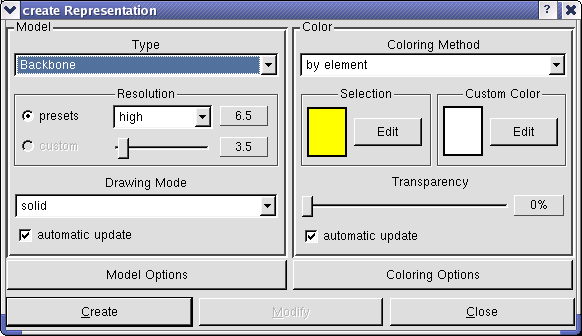Views
BALLView Documentation
|
| Model | Note |
| Line | very fast, first choice for very slow computers |
| Stick | |
| Ball and Stick | can also show aromatic and multiple bonds dashed (see Advanced Options) |
| Van der Waals | |
| Solvent Excluded Surface | |
| Solvent Accessible Surface | Currently still very slow and buggy |
| Backbone | |
| Cartoon | Use best with coloring mode SecondaryStructure |
| H-Bonds | See here |
| Forces | Invisible if no forces are acting on atoms. |
Resolution
Every model can be created in at least four different resolutions to comply with vastly different graphic performances of today's computers.
Try setting the detail level to "low" if the graphics are bucking while rotating the view.
The detail level of all surfaces can be set in smaller steps by using the according slider below.
The image below shows a Ball and Stick model in three different detail levels.


BALLView provides three drawing modes: solid, wireframe and dots.
Hint: For images like above try the wireframe mode for surfaces with a resolution below 3.5 and with a transparency around 80%.

Drawing Mode

Hint: For images like above try the wireframe mode for surfaces with a resolution below 3.5 and with a transparency around 80%.
Coloring Settings
Coloring Method
BALLView currently supports these coloring methods:- by element
- by residue index
- by residue name (a different color for every amino acid)
- by residue type (polar, hydrophobic, ...)
- by secondary structure
- by atom charge
- by atom distance (use with Selection)
- by temperature factor (read from PDB files)
- by occupancy (read from PDB files)
- by forces
- by chain
- custom (one single color)
